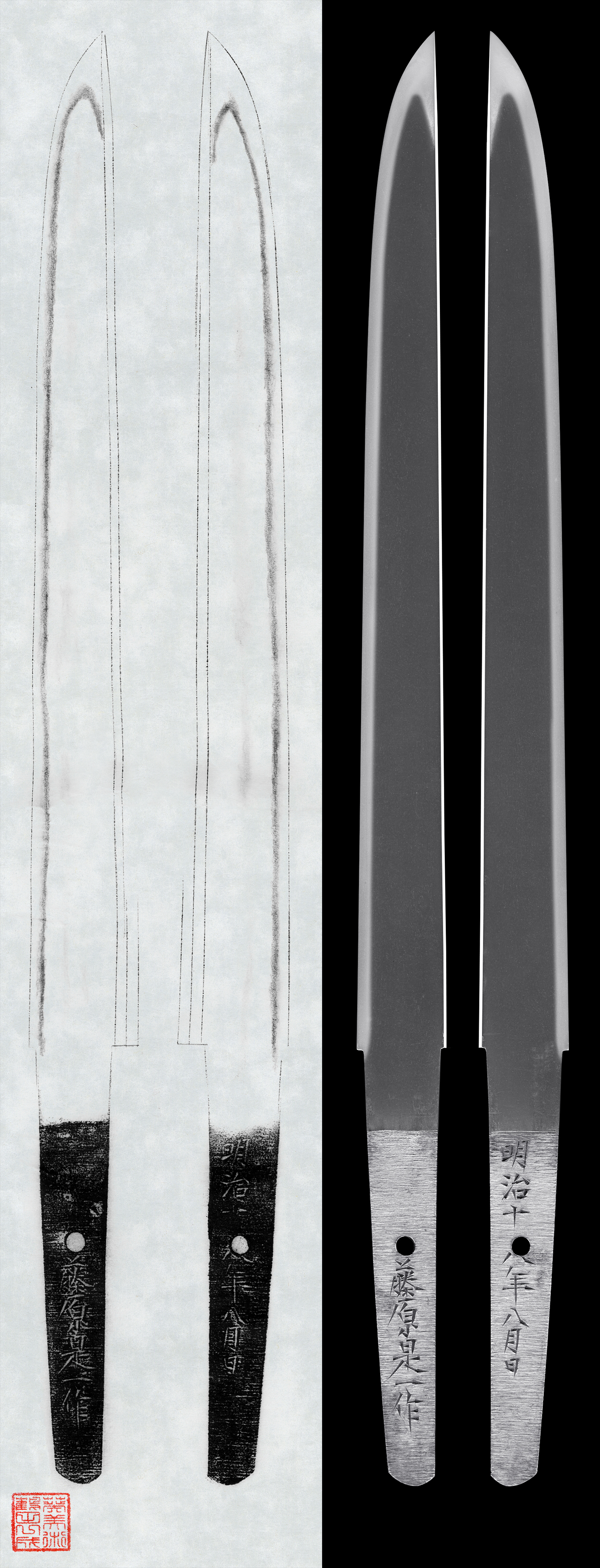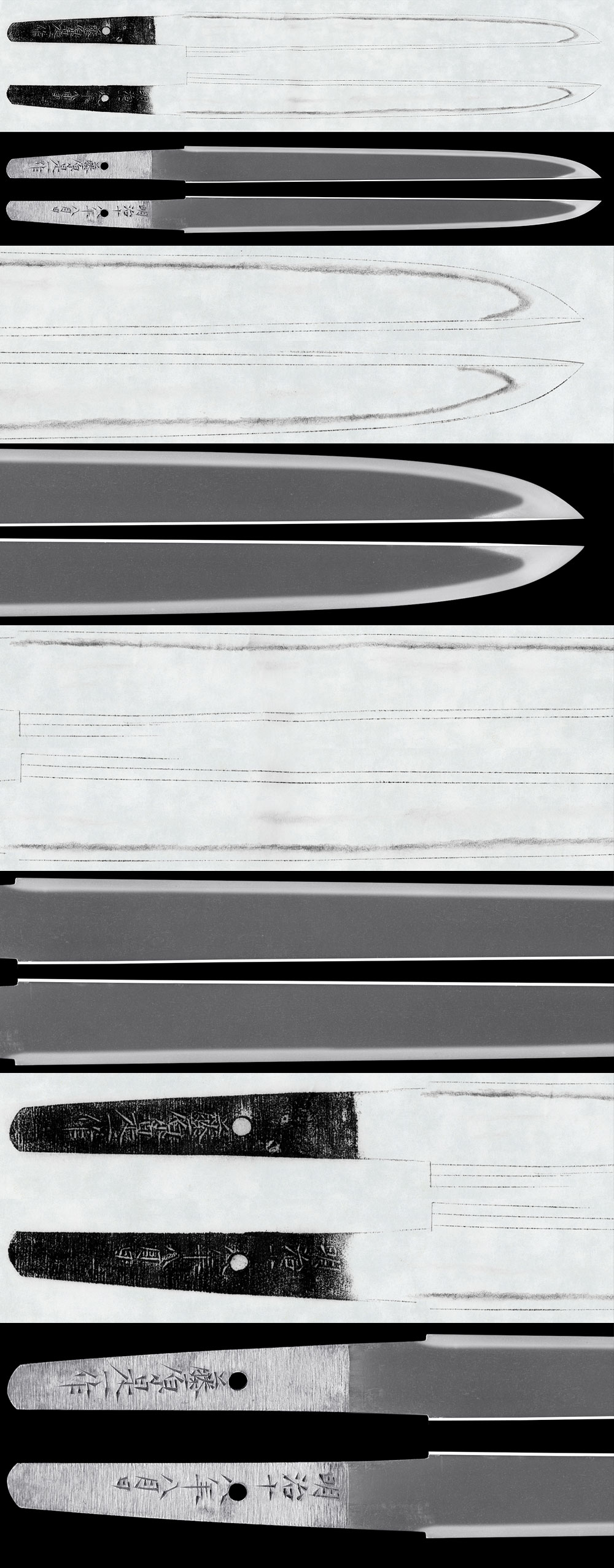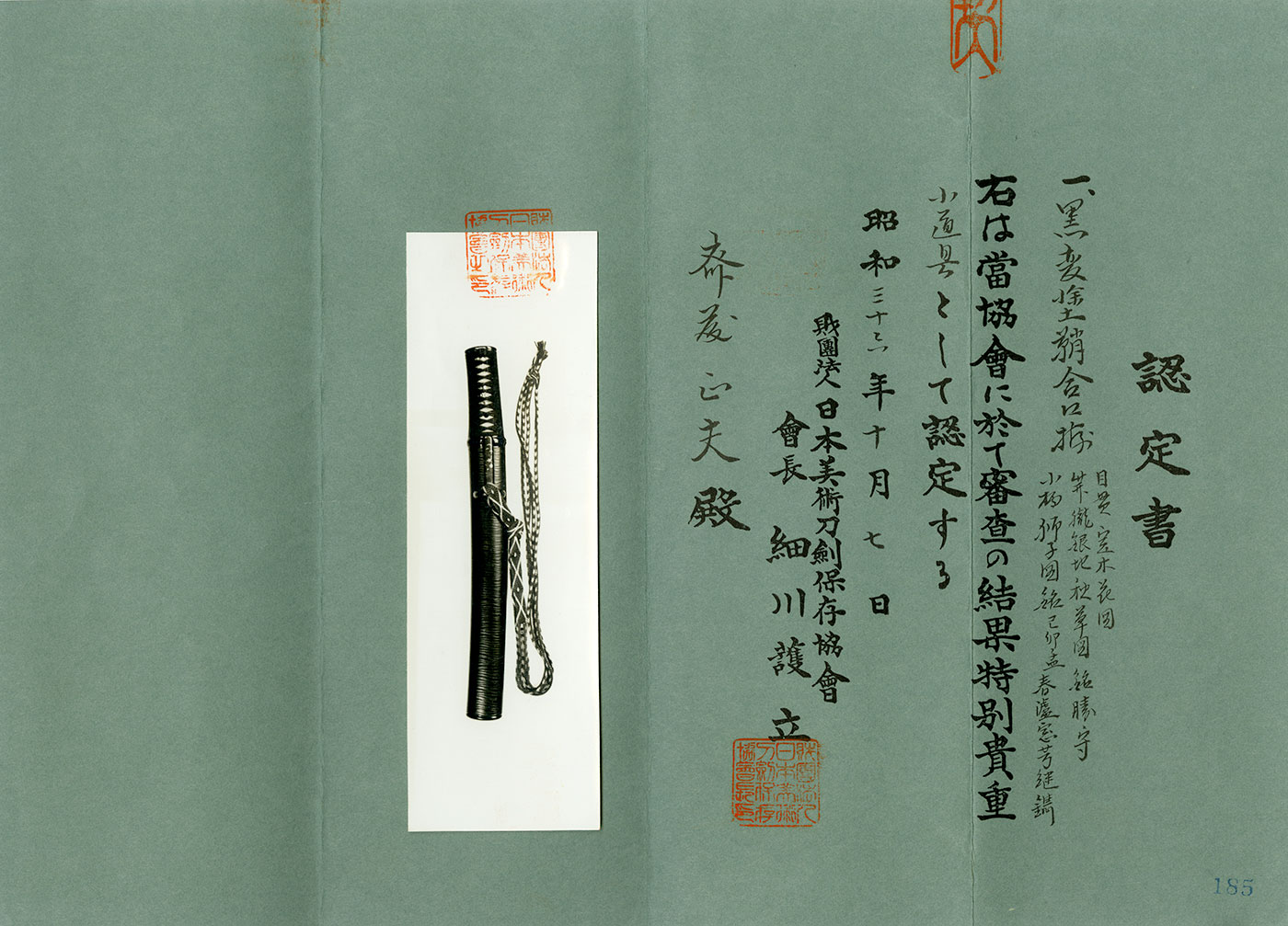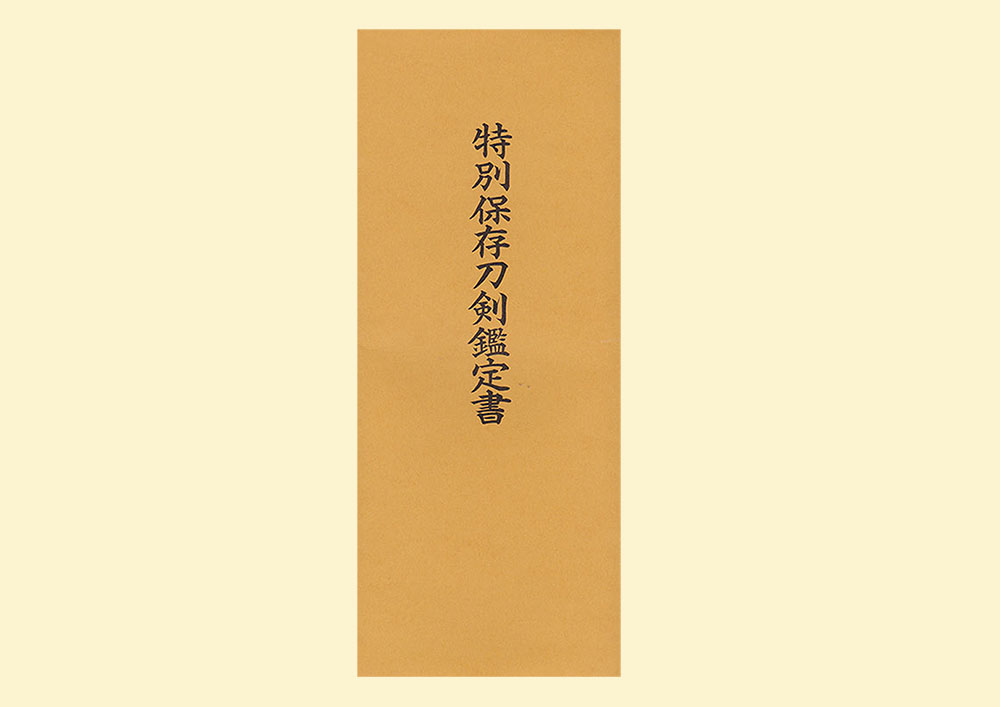Description
Ordering number:AS24854
Tanto in Shirasaya, with Koshirae (NBTHK Tokubetsu Hozon Token)(Koshirae: NBTHK Tokubetsu Kicho Tosogu)
Signature: Fujiwara Korekazu Saku (7th Generation)
Date: August, Meiji 18 (1885)
藤原是一作(七代)
明治十八年八月日
Shinshinto: Jyojyo Saku – Musashi
We divide 4 sections for each sword as Saijyo Saku, Jyojyo Saku, Jyo Saku and Regular Saku.
This work is ranked as Jyojyo Saku.
Habaki: Double-layered gold-covered
Blade Length: 8 sun 1 bu 5 rin – 24.7 cm (9.72 in)
Curvature: Uchisori (slight inward curve)
Mekugi Hole: 1
Width at Base (Motohaba): 2.23 cm (0.88 in)
Thickness of Rim (Kasane): 0.50 cm (0.20 in)
Sword Weight: 130 g
Era: Meiji 18 (1885)
Shape: This is a healthy tanto with remaining original blade edge (ubaha), faithfully reproducing the style of Rai school.
Jigane: Ko-itame hada with visible chikei, showing utsuri.
Hamon: Ko-nie deki with deeply visible nioiguchi, a soft, bright, and clear edge.
Boshi: Rounded and returns beautifully.
Features: This tanto is known to be registered under a Daimyo’s name, with registration number Tokyo 31912 on March 31, Showa 26 (1951). Korekazu resumed swordsmithing after the lifting of the sword ban that followed the 1871 decree abolishing the samurai’s right to carry swords.
Please take note of the beautiful and clear suguha hamon with a deeply defined nioiguchi.
Fittings: NBTHK Tokubetsu Kicho Tosogu (*The kozuka differs from the one listed in the certificate).
Saya: Black lacquered saya with decorative variation.
Kozuka: Shakudo nanako ground with a high-relief carving of a lion, gold inlay.
Inscription: Signed “Goto Denjo”.
Kogatana: Signed “Osafune ju Kaganosuke Sukenaga”.
Warikogai: Shibuichi with high-relief carving of flowers.
Inscription: Signed “Katsumori”.
Menuki: High-relief carving of floral motifs in solid gold (?).
Aoi Art’s Comment: This is a splendid suguha hamon by Fujiwara Korekazu. The bright and clear jigane and deeply defined nioiguchi are reminiscent of the Rai school style (Kiyomaro utsushi).
The koshirae is elegant, and the hamon on the kogatana is also beautifully crafted.
Korekazu, 7th generation, had to cease sword production due to the Meiji sword ban, but resumed work after receiving permission to forge again.
This tanto was made in August 1885, and he passed away six years later on November 24, 1891, at age 73.
There is no rust on the nakago, and the piece is in excellent condition.
Historical Context: August 1885 (Meiji 18) was the month when Emperor Meiji visited Komyoji Temple during his Sanyo Road tour.
Around the same time, he also visited Okayama.
Notably, the cabinet system was also established in late 1885, a key step in Japan’s modernization.
Emperor Meiji was known for his appreciation and collection of Japanese swords.
NBTHK Tokubetsu Hozon Token (to be issued soon)
Koshirae: NBTHK Tokubetsu Kicho Tosogu
Aoi Art estimation paper: Whole Oshigata










 日本語
日本語







